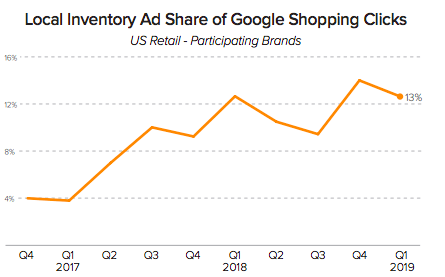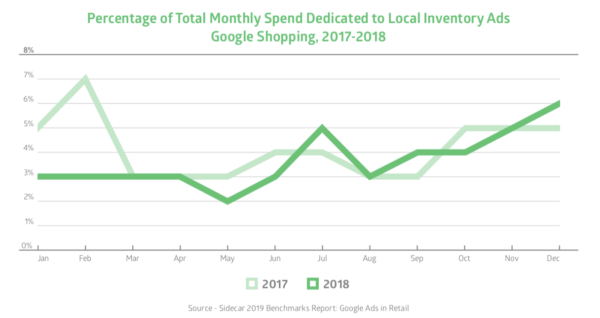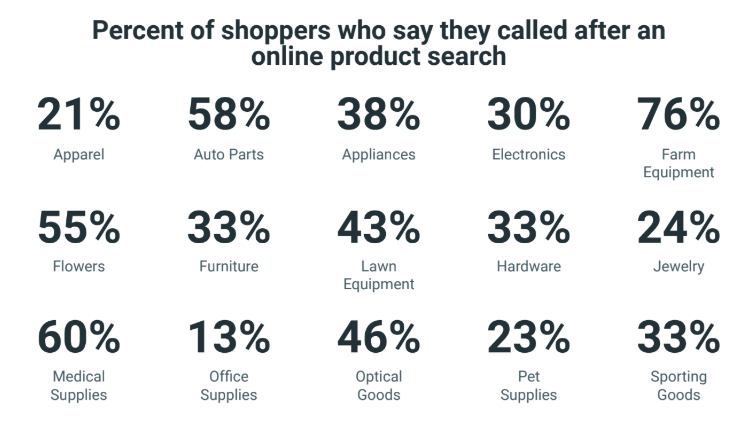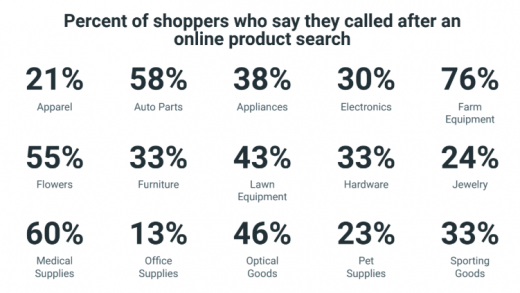Grow Sales from Google Local Inventory Ads Using Insights From Consumer Calls
— May 9, 2019

rawpixel / Pixabay
Brick-and-mortar shopping no longer means walking into a store and making a purchase. Shoppers now want to know what products are available at each store location along with pricing information and product details before they ever walk through the door. In fact, 83% of shoppers are more likely to visit a store if they can check the availability of an item online beforehand.
Online and offline paths are inextricably intertwined as shoppers regularly perform online research (often on smartphones) for purchases made via offline channels. And these omnichannel shoppers are valuable customers, spending an average of 4% more during each in-store shopping event and 10% more online than customers who shop through only one channel.
One way retailers are using shoppers’ online research to drive offline sales is through Local Inventory Ads (LIAs). LIAs are a type of Google Shopping ad that lets retailers show real-time local inventory along with information like in-store availability and pricing. LIAs help retailers drive foot traffic by arming consumers with confidence that the item they are looking to purchase is available in a nearby store.
LIAs provide benefits to marketers like advanced targeting based on shopper proximity to stores and direct access to shoppers who want to purchase in-store. They also offer a better shopping experience to consumers by reducing the friction between online and offline and even allowing options like buying a product online and picking it up at a nearby store.

Source: Merkle
And, Local Inventory Ads are gaining traction with advertisers with both spend and consumer engagement up. A recent study shows that LIAs represented 13% of all Google Shopping clicks in Q1 2019 (just over three times that of Q1 2017).

Source: Sidecar
How Do Local Inventory Ads Work?
An LIA is served when a consumer searches for a product that is available in a store near their geographic location. The ad features a product image, price information, and an indicator of a nearby store that has the product in stock.
When a consumer clicks on the LIA, they are directed to the local storefront page of the nearest physical store. They’ll be shown additional information including the name of the store, store address and a map, the store’s phone number, and store hours. From here, shoppers have a few choices. They can choose to get directions to the nearest store, change the store location, navigate to the main site to purchase the product online, search the store’s inventory, or place a call to the business.
Local Inventory Ad Best Practices
- Diligently updating inventory availability and pricing information updates are important in order to provide a rewarding customer experience. Update at least once a day as recommended by Google.
- Make Local Inventory Ads more visible in areas near your store locations by enabling location extensions and location targeting. Target the entire country where you want ads to be served and increase bids for a 15- to 20-mile radius around each of your store locations.
- Maximize LIA visibility on mobile by applying a positive mobile bid adjustment to your LIA Shopping campaign.
- Keep bids active 24 hours a day, 7 days a week. This allows shoppers to see product availability, even while store locations are closed. Boost performance during store hours by using a positive bid adjustment during these times.
Local Inventory Ads Drive Consumer Calls
Of course, LIAs drive foot traffic but they also drive another type of offline interaction—consumer calls. Shoppers often call after performing a search, especially when researching on mobile. And once they make a call, they often convert within a day.

Source: LSA
Marketers using LIAs to drive in-store traffic can also harvest the data generated by consumer calls to understand caller intent, product interest, and value to your business. Retail marketers can use these insights to better target consumers with LIAs and other ads, showing them the right message at the right time to convert them from shopper to customer.
Use the following tips to drive more sales from LIAs with insights from consumer calls.
Tip 1. Convert More Prospects to Customers
Google’s Customer Match lets marketers build audiences for Google Shopping ads, including LIAs, using lists of consumer phone numbers. Try adding unconverted callers into the right audiences based on product interest expressed during their call. Consider adjusting bids up or down for these consumers based on the purchase urgency and value to your business uncovered from their conversation. You might also adjust your negative keywords based on what you learned about the shopper during their call. A call analytics solution can provide you with analytics on calls driven by your marketing, including Local Inventory Ads.
Tip 2. Increase Revenue with Cross-Sell and Upsell Campaigns
Marketers can drive sales by promoting products similar or related to items a shopper has purchased or considered. Add callers to Google Shopping audiences for relevant products upsell and cross-sell them related items.
Tip 3. Expand Your Reach with Similar Audiences
Google’s Similar Audiences for Shopping lets retailers target lookalike audiences with similar search behavior and characteristics as those on a list. Acquire new customers by finding Similar Audiences for callers who either converted or are quality prospects. If these new website visitors don’t convert, add them to your remarketing lists.
Tip 4. Suppress Callers from Seeing Irrelevant Ads
Avoid wasting budget retargeting callers who aren’t sales leads or already made a purchase over the phones. Add callers who have already made a purchase or are not sales leads to your exclusions lists for Shopping campaigns or ad groups so you don’t serve them ads that aren’t relevant to them and that won’t drive sales for your business.
Tip 5. Answer Caller Questions on Your Site to Increase Visits and Conversions
Calls provide marketers access to the questions that consumers have—in their own words—for each of your products and services and at each stage of the customer journey. They reveal the answers your business gave to those questions and whether it helped win or lose the customer. By optimizing website content (and your Google Shopping product feed) for the important questions callers ask—and the answers that won their business—you can show up for those search queries that have real buying intent and better convert the consumers on your website.
To learn more about using consumers calls to fuel Google Shopping Ad performance, download our eBook, Optimize Google Shopping Ads with Insights from Consumer Calls.
Digital & Social Articles on Business 2 Community
(42)


